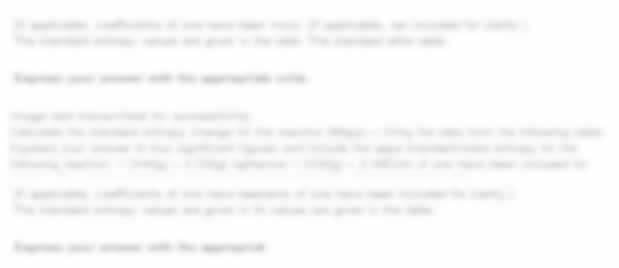/
Questions/
Report/
You recruited 50 students into the study. All male students were studying at the University of Reading; all were aged 18-21 years old: Biomedical Science, Report, UOB, UK
Looking For Plagiarism Free Answers For Your UK College/ University Assignments.
BUY NOWYou recruited 50 students into the study. All male students were studying at the University of Reading; all were aged 18-21 years old: Biomedical Science, Report, UOB, UK
| University | University of Bedfordshire (UOB) |
|---|---|
| Subject | Biomedical science |
DATA FOR MALESTUDENTS
You recruited 50 students into the study. All male students were studying at the University of Reading; all were aged 18-21 years old.
All were considered reasonably fit and healthy with no pre-existing health conditions that would prevent exercise. The students were split into two equal-sized groups: (1) those students(N=25) that wore a fitness tracker and could see the data, and (2) those students (N=25) that wore a fitness tracker but couldn’t see the data. Students wore the tracker for the same six-week period during May-June 2017.
During this six-week period, each student was asked to charge their fitness tracker overnight to ensure all exercise was recorded. The fitness tracker would count any incidence where heart rate was about 160bpm for 10 minutes or more as “an exercise session”.
The number of exercise sessions recorded are summarised below (e.g. Male subject #1 recorded 16 exercise sessions in the six-week period, whereas Male subject #50 recorded 11 exercise sessions in the same period):

NB: when you enter these data into MINITAB you will need to create two columns of figures, one column for the number of exercise sessions by the male students in the control group (no tracker) and one column for the numbers of exercise sessions by the male students in the experimental group (with a tracker).
Do You Need Assignment of This Question
DATA FOR FEMALE STUDENTS
You recruited 40 female students into the study. All-female students were studying at the University of Reading; all were aged 18-21 years old. All were considered reasonably fit and healthy with no pre-existing health conditions that would prevent exercise. The students were split into two equal-sized groups: (1) those students (N=20) that wore a fitness tracker and could see the data, and (2) those students (N=20) that wore a fitness tracker and could not see the data. Students wore the tracker for the same six-week period during May-June 2017.
During this six-week period, each student was asked to charge their fitness tracker overnight to ensure all exercise was recorded. The fitness tracker would count any incidence where heart rate was about 160bpm for 10 minutes or more as “an exercise session”. The number of exercise sessions recorded are summarised below (e.g. Female student #1 recorded7exercise sessions in the six-week period, whereas Female subject #40 recorded 10exercise sessions in the same period):

NB: when you enter these data into MINITAB you will need to create two columns of figures, one column for the number of exercise sessions by the female students in the control group (no tracker) and one column for the number of exercise sessions by the female students in the experimental group (with a tracker).
Buy Answer of This Assessment & Raise Your Grades
Get help by expert
Elevate your biomedical knowledge with the University of Bedfordshire’s (UOB) specialized report-writing assistance. Partnering with Diploma Assignment Help UK, we provide a reliable assignment writing service tailored for Biomedical Science. Unveil unique insights and excel in your academics through our expertly crafted reports. Trust UOB’s academic support to fuel your success in Biomedical Science.
Recent solved questions
- ILM: Assess own leadership behaviours and potential in the context of a particular leadership model and own organisation's working practices and culture: Leadership skills and development, Assignment, UOA, UK
- ILM: Describe the factors that will influence the choice of leadership styles or behaviours in workplace situations: Leadership skills and development, Assignment, UOA, UK
- ATHE Level 7 Unit 5 : You Have Been A Senior Manager For Several Years And Have Decided That Your Next Career Move Should Be To Take Responsibility: Personal Development for Leadership and Strategic Management Assignment, UK
- You are required to prepare a 5-year strategy review to shareholders for evaluating the business simulation: 5-year strategy review to shareholders, Report, UOEL, UK
- CMI Unit 502: Approaches to achieving a balance of skills and experience in a team: Principles of Developing, Managing and Leading Individuals and Teams, Assignment, UK
- CMI Unit 502: Principles of Developing, Managing and Leading Individuals and Teams, Assignment, UK
- UNIT-701: How the principles of strategic leadership can be applied to respond to complex organisational challenges: Strategic Leadership, Assignment, CMI, UK
- UNIT- 701: The leadership behaviours and skills required to deliver strategic goals: Strategic Leadership, Assignment, CMI, UK
- UNIT- 701: Understanding of how the organisational context influences management and leadership practice: Strategic Leadership, Assignment, CMI, UK
- Evaluate the concept of evidence-based practice and assess how approaches to evidence-based practice: Evidence - based practices, Report, UOH, UK

